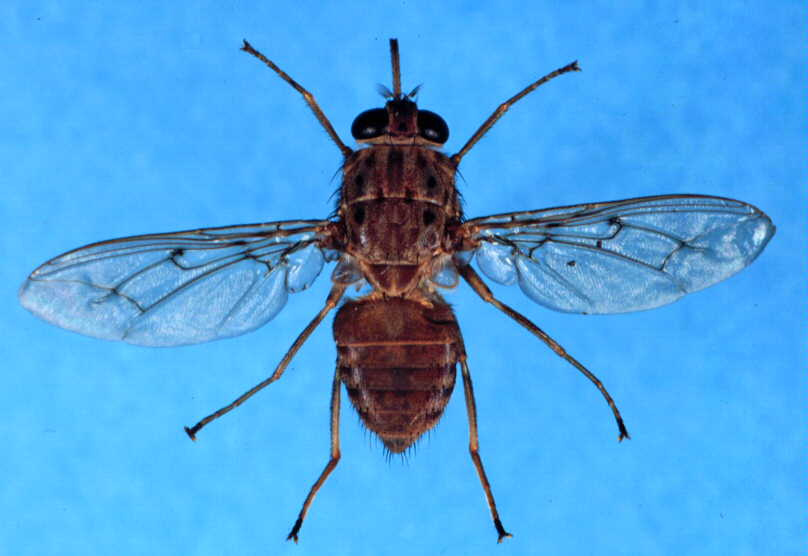By: Rachel David
Send to a friend
The details you provide on this page will not be used to send unsolicited email, and will not be sold to a 3rd party. See privacy policy.
Handkerchief-sized blue flags covered in insecticide could trap and kill tsetse flies, offering a new and cheaper way to help eliminate sleeping sickness from Sub-Saharan Africa.
The blue cloths attract the flies, which carry Trypanosoma brucei, the parasite that causes sleeping sickness. Dotted around disease hotspots, the traps could be a cheap addition to existing efforts to control sleeping sickness through screening for infection and treating the victims, researchers say.
“I think we could eliminate the disease.”
Mike Lehane, Liverpool School of Tropical Medicine
“I think we could eliminate the disease,” says Mike Lehane, an author of the study and researcher at the Liverpool School of Tropical Medicine in the United Kingdom. This, he says, can be done by combining new drugs, diagnostics and vector control in remaining sleeping sickness hotspots.
Most work, he notes, needs to be done in the Democratic Republic of Congo, which reports 70 per cent of the continent’s 6,000 or so sleeping sickness cases. Even though the number of reported cases has been dropping since 2009, 65 million people remain at risk from the disease in 36 countries in Sub-Saharan Africa, according to the World Health Organization.
Sleeping sickness causes fever and daytime sleepiness, and can be fatal if not treated.
In their field study in northern Uganda, published in PLoS Neglected Tropical Diseases this month, Lehane and his colleagues found that using the blue flags resulted in a 90 per cent decline in the local tsetse fly population.
Lehane’s work complements a previous study, which found that small blue or black traps were just as effective as large and more complicated traps.
A parallel 3-year study was carried out in Guinea using the flags as vector control alongside screening and treating people who were infected. It found that the tsetse population dropped by 80 per cent and the disease prevalence and the number of new cases went down, too.
The flags are cheap to make and last about 6 months, so the cost of deploying them will be trivial, says Lehane. The researchers calculated that it would cost US$42,700 for one year of blue-flag vector control in Uganda, compared with the estimated cost of US$430,000 for one round of screening covering 80 per cent of the population.
However, deploying the blue flags would be difficult in rural areas without significant government backing, as they need regular replacement, says Susan Welburn, a researcher at the University of Edinburgh, in the UK.

Imre Malele, a researcher at the Tanzania Veterinary Laboratory Agency, says that communities affected by the tsetse fly tend to become less vigilant about replacing traps when the threat seems to have abated.
“When there is fatigue, I can assure you that the fly population tends to recover,” Malele says.
Lehane agrees that successful deployment of the blue flags requires government backing. But he says the technology is feasible if employed alongside traditional strategies to fight sleeping sickness.
References
[1] PLOS Neglected Tropical Diseases, DOI: 10.1371/journal.pntd.0003822
[2] PLOS Neglected Tropical Diseases, DOI: 10.1371/journal.pntd.0003727














